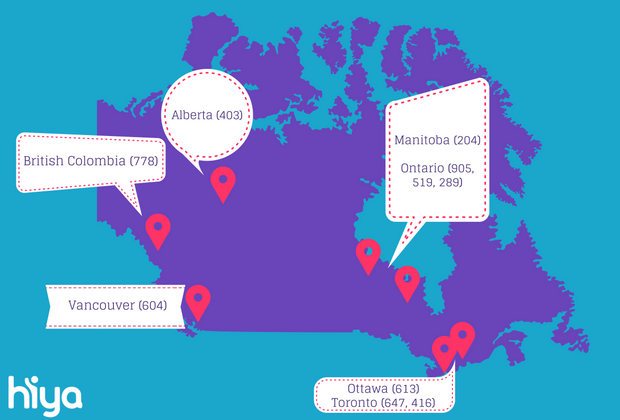Robocalls are making their way around the world! In Hiya’s first Global Robocall Radar Report, we’ve estimated that global spam calls have grown a whopping 325% to 85 billion worldwide. The report is based on an analysis of more than 12 billion calls per month worldwide, concluded that while unwanted calls are indeed very prevalent in the United States where regulators have taken notice, they are also growing rapidly at a global level. The report has pinpointed Spain, the UK, Italy, France, Argentina and the United States as the countries who are the most affected by nuisance and fraudulent calls.
“As spam calls continue to skyrocket globally, the demand for protection from unwanted phone calls has increased drastically,” said Alex Algard, CEO of Hiya. “By combining industry-leading call spam detection with a solution that ensures calls from legitimate businesses are properly identified, it’s our mission to make sure everyone across the world can confidently answer their phone again.”
Hiya analyzes more than 12 billion mobile calls per month globally and then leverages its proprietary rule-based algorithm to identify these calls for consumers. Hiya’s Global Robocall Radar is calculated by extrapolating the total number of unwanted robocalls detected among Hiya’s user base as compared to the entire global population of mobile subscribers. In addition to observing that robocalls grew 325% to 85 billion in 2018, Hiya’s first Global Robocall Radar found the following:
Top 10 Countries With the Biggest Phone Spam Problem
For the top 10 countries with the biggest spam problem, below is a breakdown of the percentage of incoming calls that are not “saved to contacts” and are identified as spam (Spam Rate), in addition to the average number of monthly spam calls per user.
1). Spain:
- Spam Rate: 24%
- Monthly Spam Calls Per User: 9
2). UK:
- Spam Rate: 22%;
- Monthly Spam Calls Per User: 7
3). Italy:
- Spam Rate: 21%
- Monthly Spam Calls Per User: 6
4). France:
- Spam Rate: 20%
- Monthly Spam Calls Per User: 7
5). Argentina:
- Spam Rate: 10%
- Monthly Spam Calls Per User: 3
6). United States:
- Spam Rate: 10%
- Monthly Spam Calls Per User: 7
7). Mexico:
- Spam Rate: 9%
- Monthly Spam Calls Per User: 6
8). Brazil:
- Spam Rate: 9%
- Monthly Spam Calls Per User: 8
9). Chile:
- Spam Rate: 9%
- Monthly Spam Calls Per User: 4
10). Australia:
- Overall Spam Rate: 6%;
- Monthly Spam Calls Per User: 2
Most Prevalent Spam “Campaigns” Worldwide:
- Bank Account Scam: Callers pretend to be an official representative of the bank and request sensitive information or items which will allow them to access the victim’s bank account.
- Extortion/Kidnapping: These scammers call random phone numbers and demand payment for the return of a “kidnapped” family member or friend.
- Credit Card Scam: Thieves will trick victims out of their personal information. They might call, posing as their bank, to “assist” while phishing for card details. Random scammers might even call hotel rooms acting as the front desk to “confirm” credit card details.
- Wangiri Scam (“One Ring”): For years, the Wangiri scam, also known as the ‘One-Ring Scam,’ has been preying on victims and enticing them to call back international numbers. The victim in this case does not realize that they’re being charged for premium rates.
- Neighbor Scam: Phone fraudsters use Voice over Internet Protocol (VoIP) software to mimic (also known as neighbor spoofing) the first few digits of a user’s phone number to trick consumers into thinking a nearby friend or business is calling.












